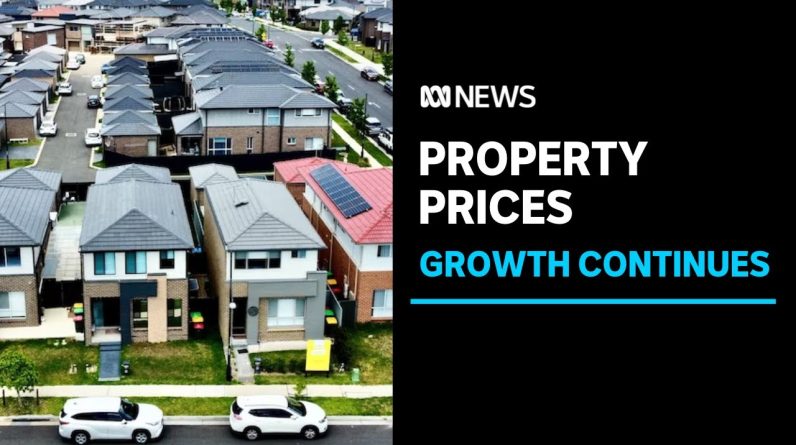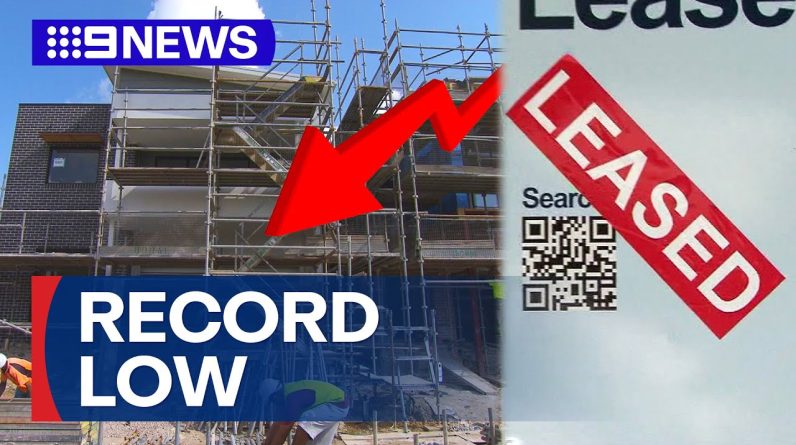The property market surprised everyone this year with house prices increasing faster than the rate of inflation.
Australian Housing Market Defies Predictions, Prices Soar
The Australian housing market has experienced a surprising surge in prices, defying earlier predictions of a softer market. Despite expectations of a decrease in house prices, factors such as rising interest rates, inflation, negative consumer sentiment, and a scarcity of new listings have contributed to this unexpected rise.
Additionally, the impact of interest rate hikes on mortgage holders’ borrowing capacity and affordability has not led to a significant increase in distressed listings or mortgage arrears. The deep-seated housing shortfall, driven by rapid population growth and undersupply, has further intensified the situation. The generational divide and intergenerational wealth transfer have also played a role, creating a housing affordability issue.
Looking ahead, the uncertain outlook for the Australian housing market in 2024 is influenced by factors such as post-COVID migration, population growth, and challenges in meeting housing supply and demand.
Key Takeaways
- Despite predictions of softening house prices, the Australian housing market experienced a significant rise in prices.
- Factors contributing to the rise in prices include rising interest rates, continued inflation and negative consumer sentiment, scarcity of new listings, unprecedented population growth, and sellers regaining confidence.
- Interest rate hikes have had an impact on the housing market, affecting borrowing capacity and affordability, but mortgage arrears remain low and the majority of borrowers have managed the transition.
- The housing market is facing an undersupply of housing, which has become a national concern, leading to a continuous rise in asking rents and creating a dire situation for those unable to buy or rent.
Factors Behind the Housing Market Surge
An array of factors has contributed to the surge in the Australian housing market, defying predictions and driving prices to new heights. Despite expectations of softening house prices, interest rates continued to rise, which did not deter price gains.
The combination of continued inflation and negative consumer sentiment did not hinder the market’s upward trajectory. The scarcity of new listings further fueled buyer competition, while unprecedented population growth and low unemployment increased demand.
Furthermore, sellers regained confidence, leading to an influx of properties hitting the market. These various factors have collectively contributed to the remarkable surge in the Australian housing market, creating a challenging environment for buyers and exacerbating concerns of housing affordability.
As the market continues to defy predictions, it remains to be seen how these factors will shape the future trajectory of the Australian housing market.
Impact of Interest Rate Hikes
The impact of interest rate hikes on the Australian housing market has been significant. Over the past 18 months, mortgage holders have faced 13 rate hikes, leading to a transition to higher interest rates that has affected borrowing capacity and affordability.
Despite this, there has not been a spike in distressed listings as fixed rates have rolled off, and mortgage arrears remain near historic lows. The majority of borrowers have managed the transition despite the higher interest rates.
However, the housing market continues to face challenges due to the undersupply of housing. Rapid population growth has exposed Australia’s housing shortfall, creating a dire situation for those unable to buy or rent.
The generational divide and intergenerational wealth transfer also impact the housing market, with housing becoming less affordable and the situation exacerbated by Baby Boomers passing on properties.
Housing Undersupply Crisis
The housing undersupply crisis in Australia has reached critical levels, exacerbating the difficulties faced by those unable to buy or rent. Rapid population growth has exposed the deep-rooted shortfall in housing, creating a dire situation for many individuals.
The rental market has experienced a continuous rise in asking rents, further adding to the challenges faced by those seeking affordable housing options. This undersupply issue has become a mainstream national concern, as the scarcity of available housing fuels buyer competition and drives up prices.
Moreover, the inability to meet the demand for housing exacerbates the inequality in the housing market, making it even more challenging for individuals without family support to improve their housing situation. Immediate actions are needed to address this crisis and provide adequate housing options for all Australians.
Generational Divide and Wealth Impact
A deepening generational divide is being fueled by the escalating housing affordability crisis in Australia. As housing prices continue to soar, younger generations are finding it increasingly difficult to enter the property market, exacerbating the already existing wealth gap between generations.
The situation is further complicated by the fact that many Baby Boomers are passing on properties to their children, creating a situation where intergenerational wealth transfer may skip a generation, widening the divide even more.
This creates a challenging environment for those without family support, making it difficult for them to improve their housing situation.
As Baby Boomers age, the inequality in the housing market is expected to continue to unfold, further deepening the generational divide and its impact on wealth distribution.
Outlook for the Australian Housing Market in 2024
As we shift our focus to the outlook for the Australian housing market in 2024, it is evident that the escalating housing affordability crisis and intergenerational wealth impact will continue to shape the landscape.
Despite efforts to address the housing undersupply, the uncertain outlook remains due to population growth and continued shortage. The national target to build 1.2 million homes over five years may not alleviate the immediate pressure, as post-COVID migration and population growth are expected to drive prices up further. The slowing housing supply in the face of a growing population will exacerbate the shortfall, creating an even more challenging environment.
Additionally, the difficulty in bringing in workers from interstate may affect builders’ ability to meet the demand, adding to the strain on the market.
Rising Interest Rates and House Prices
Despite predictions and expectations, the Australian housing market has experienced a significant surge in prices amidst rising interest rates. Contrary to projections of softening house prices, the market has defied these forecasts and continued to soar.
Despite the consecutive interest rate hikes, which saw mortgage holders face 13 increases in the past 18 months, the housing market has remained resilient. Borrowers have managed the transition to higher interest rates, and mortgage arrears remain near historic lows.
This unexpected trend can be attributed to a multitude of factors, including scarcity of new listings fueling buyer competition, unprecedented population growth, low unemployment, and sellers regaining confidence.
However, the impact of rising interest rates on the housing market may still be a factor to watch closely in the coming months.
Population Growth and Housing Demand
The rapid population growth in Australia has significantly increased housing demand. The influx of people, both from domestic migration and international immigration, has put pressure on the already limited housing supply. As a result, the demand for housing has escalated, leading to soaring prices in the Australian housing market.
The population growth has outpaced the construction of new homes, creating a situation where the supply cannot keep up with the demand. This has created a highly competitive market, with buyers competing for a limited number of available properties.
The population growth trend is expected to continue, further exacerbating the housing demand and potentially driving prices even higher. As a result, addressing the housing shortage and finding solutions to accommodate the growing population will be crucial in maintaining housing affordability in Australia.
Challenges in Meeting Housing Supply and Demand
Meeting housing supply and demand in Australia poses significant challenges due to population growth and limited construction.
The unprecedented population growth in Australia has put immense pressure on the housing market, leading to increased demand. However, the limited construction of new housing units has failed to keep up with this growing demand, resulting in a shortage of available properties.
This scarcity of supply has fueled competition among buyers, driving up housing prices. Additionally, the challenge of meeting housing demand is further exacerbated by the difficulty in bringing in workers from interstate, which may affect builders’ ability to meet the increasing demand.
These challenges in meeting housing supply and demand highlight the need for effective strategies and policies to address the housing shortage and ensure affordable housing options for all Australians.
Conclusion
The Australian housing market has defied expectations by experiencing a significant surge in prices. Factors such as rising interest rates, undersupply of housing, and the generational divide have all contributed to this phenomenon.
Looking ahead to 2024, the outlook for the housing market remains uncertain, with population growth and supply challenges expected to continue driving prices up. The impact of rising interest rates and difficulties in meeting housing demand may further exacerbate the existing housing shortfall.
Albion News is a great place to find informative, up-to-date news articles. We provide a wide range of unique articles that offer an interesting perspective on current events from around the world and from various different sources. You can easily search for the topics that matter most to you and explore in-depth pieces that provide insight into the issues and important debates occurring today. Albion News helps you stay informed with carefully researched and credible stories!







